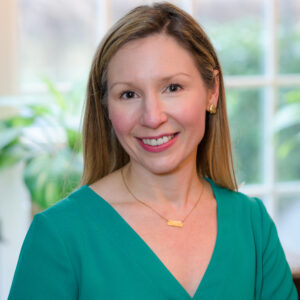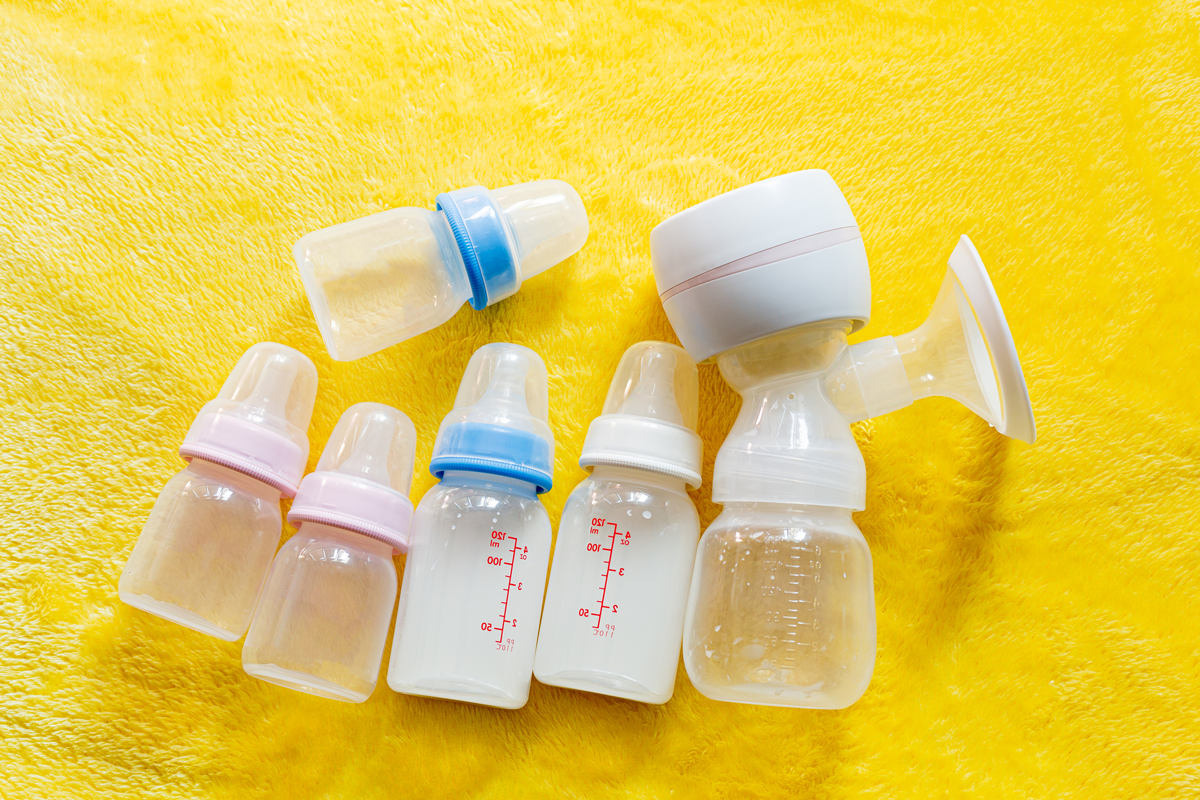Half the population has them, yet it can feel awkward to talk about them: boobs!
As an endocrinologist — a specialist in hormones and glands — I talk about boobs with many women. Why talk to your endocrinologist about your boobs? I think there are two reasons. Boobs develop and change throughout our lives under the influence of hormones. Those changes can catch us by surprise or make us anxious. Plus, I have had my own boobs for more than 30 years; my patients and I have that in common.
It seems to me we could all use an owner’s manual for our breasts. What are they doing when they aren’t lactating? Why are they more painful than they used to be? Is that lump something to worry about?
What exactly are boobs?
Evolutionarily, breasts serve two purposes: attracting a mate and producing milk to feed our babies. On the milk production: the tissue of the breast that produces milk is actually made up of specialized sweat glands. But there is much more to breasts than fancy sweat glands. The mature breast is made up of skin, oil-producing glands, ducts, lobules or glands, fat, and ligaments that fight gravity to help hold everything in place. The skin is full of nerve endings, especially around the nipple and areola.
Breasts change a lot as we age, from their first appearance in puberty to breastfeeding to menopause. Three hormones are responsible for the development of and changes in breasts over our lifetime: estrogen, progesterone, and prolactin.
Estrogen and progesterone are hormones made in the ovaries. They rise and fall over the course of the menstrual cycle. Prolactin is made in the pituitary gland and rises during pregnancy and in the early postpartum days. Prolactin prepares the breast to produce breast milk and then triggers breast milk production.
Prior to puberty, the nipple, areola, and the immature ducts beneath them are identical in boys and girls. Early in puberty, estrogen stimulates breast glands and ducts to grow. We see this externally as the development of breast buds — small raised lumps behind the nipples — one of the first external signs of puberty. Typically girls will get their first period about two years after they develop breast buds.
During adolescence, breast buds can look very different from one child to the next and can at times be visibly asymmetrical. There is little agreement on just how many girls and women have significant breast asymmetry. However, chart reviews suggest that breast asymmetry typically peaks mid-puberty. In adults, most asymmetry is considered mild, but most women have one breast that is larger than the other.
The second important phase of change for breasts is pregnancy and breastfeeding. During this time, breasts often get larger as estrogen, progesterone, and prolactin stimulate the glands to grow and become more complex. At the end of pregnancy and after birth, prolactin stimulates the glands to make breast milk.
In addition to preparing the breasts for breastfeeding, progesterone also causes ligaments throughout the body to loosen, including those that suspend the breasts. This is why many women notice sagging after pregnancy, whether they breastfeed or not. At least two observational studies show that when women have more pregnancies, they are more likely to experience breast sagging. Breastfeeding is not associated with increased sagging.
Starting around age 40, the more complex breast glands that are present during the childbearing years revert back to the simpler glands present in adolescence. This explains the loss of breast volume many women experience in midlife. However, there is also a significant increase in the amount of fat in the breast. For some women, this results in an unexpected increase in breast volume in midlife.
Sign up for Hot Flash by ParentData
Hot Flash is a new weekly newsletter on navigating your health and hormones in the post-reproductive years, written by Dr. Gillian Goddard. Sign up now for free!
Midlife changes: breast pain, discharge, and lumps
I treat many women in all stages of life. I’ve noticed that women in midlife have a surprising number of concerns about the breast changes and symptoms they experience. They aren’t sure if they should be worried or not. My patients most commonly ask about breast pain, nipple discharge, and breast lumps. Let’s discuss all three.
Breast pain
A small study from 1977 looked at breast sensitivity and pain threshold among prepubescent children, and in women during different phases of their menstrual cycle and during pregnancy and nursing. The study showed what many of us already know, that breasts are most sensitive around the time of ovulation and menses. Sensitivity also increases throughout pregnancy and peaks during the first days after delivery.
Breast pain is the single most common breast-specific complaint. In one international survey of nearly 1,700 women, 52% of participants reported experiencing breast pain; 57% described their pain as “periodic.” Most women described their pain as tender or aching, and prevalence peaked among women in their 40s.
This is related to increased levels of estrogen at certain times in the menstrual cycle as women move past their peak reproductive years. When the quality and number of eggs a woman has decreases, typically in her 40s, it takes more hormonal signal to mature and ovulate an egg each cycle. The same hormones that drive that process stimulate the ovaries to make estrogen. As a result, estrogen levels can be much higher in women in their 40s, leading to a number of symptoms, including more breast pain.
Studies looking at microscopic changes in breast tissue show that after ovulation, estrogen and progesterone stimulate ducts and glands to proliferate. There is also swelling and water retention within the breast tissue leading up to the menstrual period. When estrogen and progesterone drop at the start of the period, breast swelling resolves.
Cyclic breast pain — pain that corresponds to the menstrual cycle — and pain that is in both breasts is nearly always benign. One cohort study found no difference in the incidence of breast cancer in women with breast pain compared with women undergoing routine breast cancer screening. Breast cancer was found in imaging for breast pain in 0.5% of participants, compared with 0.6% of women undergoing imaging for routine breast cancer screening. I tell my patients that cyclic pain is annoying but shouldn’t be scary.
Non-cyclic breast pain — pain that is always present or comes and goes randomly — arises from a number of different causes. This includes having large, pendulous breasts that stress the supportive ligaments, hormone replacement therapy, rapidly enlarging breast cysts, and mastitis (though mastitis is rare outside of breastfeeding, it can occur). Most causes of non-cyclic breast pain are benign, but it is always reasonable to consult your doctor, especially if the pain is focused in one place, or associated with skin changes or new lumps.
Women often ask if there are any changes they can make that will alleviate their pain. For example, should they cut out caffeine? For years, women with breast pain were told to avoid caffeine. However, in as early as 1984, randomized controlled trials of caffeine and breast pain showed no effect of avoiding caffeine on breast pain. So no need to skip your morning cup of coffee (thank goodness).
Breast discharge
During their reproductive years, upward of 80% of women will experience nipple discharge. Several studies (here is one) find that only 10% to 15% of those cases are associated with breast cancer.
Discharge from both breasts that is not bloody is typically caused by a rise in the hormone prolactin. Outside of pregnancy and breastfeeding, elevated prolactin can be caused by benign pituitary growths, changes in other hormones (such as thyroid hormone), and some medications. Nipple stimulation can also cause measurable increases in prolactin. If nipple discharge occurs outside of pregnancy or breastfeeding, your doctor can check your prolactin levels with a blood test and refer you to a specialist for treatment if needed.
Breast discharge that is unilateral, bloody, or associated with skin changes or lumps should always be addressed with your doctor.
Lumps and mammograms
One of the most anxiety-producing breast symptoms is a newly noted breast lump. Lumps can be benign, cancerous, or something in between. About 25% of women will have significant breast disease, and most disease presents as a breast lump. Ninety percent of breast masses in women from their 20s to their early 50s are benign. However, it is important to have an evaluation with your doctor for all new breast lumps.
Closely related to lumps: One of the most confusing subjects for those of us with breasts is when and how to get screened for breast cancer. For a long time, those at average risk for breast cancer got their first mammogram at age 40.
In 2009 the U.S. Preventive Services Task Force (USPSTF) changed the recommended age for routine breast cancer screening from 40 to 50. Screening between the ages of 40 and 49 was deemed a personal decision. Younger women have more dense breast tissue, and breast cancer is less common in this age group. As a result, screening mammography was more likely to yield false positive results. This leads to more testing, such as sonograms or breast biopsy, to confirm whether what was seen on the mammogram is cancer or not. Guidance from individual physicians has been all over the map.
In spring 2023 the USPSTF issued a draft update recommending that breast cancer screening begin at age 40. Their rationale for this change is not based on new data, but rather on the fact that the existing data is 20 years old and was largely conducted in Europe with a largely Caucasian study population, and on the idea that screening technology has improved. Essentially, the old data is hard to apply to our current situation.
If you have a family history of breast cancer, you should talk to your doctor about when to start screening.
And how long do we need to keep having mammograms? Until recently, breast cancer screening was typically stopped after age 75. Newer recommendations take life expectancy into account, recommending stopping breast cancer screening when life expectancy is less than 10 years.
In conclusion
Not many body parts evoke stronger feelings than boobs. Just when we have them figured out, our hormones change and our boobs change too. Many of the symptoms those changes cause are common among those of us with boobs. Most of those changes are benign. But the most important thing you can do for yourself and your boobs is get to know them and don’t hesitate to share any changes or concerns with your doctor.















Log in